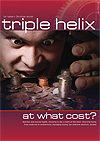Over twenty years ago, the Indian writer Amartya Sen wrote about the 'missing millions' of girls in India, speculating that a deeply entrenched bias towards boys rather than girls would lead to neglect of girl children that would compound the gender imbalance. (1) Twenty years later, there are regions of India where there are as many as 120-130 men for every 100 women. (2) China's 'One Child Policy' has led to a similar imbalance in the number of boys to girls in that nation. (3)
Although sex-selective abortion has been outlawed in India, China and many other nations, the reality is that these laws are flouted and broken widely. The trend towards sex-selection is strongest amongst the urban middle and upper classes – where poverty is not the driving force. (4) Poor villagers have less access to antenatal screening and medical abortion, but tend to take less care of their female children (stopping breast feeding earlier, giving smaller portions at meal times, less access to good clothing or education), and have more children to ensure a male child is born. (5) The rich can circumvent this and go directly to a medical solution.
However, a recent UN report on the issue sidesteps an even more troubling matter. (6) The science writer, Mara Hvistendahl, in her new book, 'Unnatural Selection' (7) has unearthed evidence that these gender imbalances, far from simply being due to cultural preferences and modern medical technology, are also the result of a deliberate population control strategy of UNFPA, IPPF, World Bank and other Western agencies during the sixties and seventies. In an article published in Foreign Policy Magazine, she explains how the Malthusian fears of thinkers in the UN and other Western agencies led them to promote male gender preference, and to fund sex screening and selective abortion of girls as a way of securing long term population reduction amongst the poor populations of Asia. (8)
One proposed solution to rising birth rates was to use the emerging technologies of ante-natal screening to identify foetal gender and allow for terminations of girls – ensuring that boys would be born to families without the need for 'excess' girls. In South Korea in the sixties and seventies this led to the US Army and USAID sending mobile clinics around the countryside offering antenatal sex screening, abortion and tubal ligation to every pregnant woman, driving up abortion rates so that by the seventies as many as 2.75 abortions were performed for every live birth.
In India the World Bank and Rockefeller Foundation pumped millions of dollars into research on antenatal sex screening during the sixties, and in the seventies rolled out mobile clinics offering amniocentesis and abortion free to poor women in rural areas. Early pilots were so 'successful' that they led to a nationwide programme, specifically targeted at reducing the number of girls being born.
Hvistendahl also relates how in China the UNFPA and IPPF pumped tens of millions into new screening technologies and training ultra-sonographers just as the One Child Policy came into effect. In China the screening was less consensual, with cases of forced abortions, and immense pressure to produce a male child. UNFPA and IPPF's complicity in this has permanently wounded their reputation in many parts of the developing world, and led many governments (notably the US) to cut off large portions of their funding.
Demographers suggest that by 2020, in some parts of India, as many as 10-15% of men will have no female counterpart. The consequence of this is already being seen in trafficking and bride abductions in some countries, as families desperate to secure wives for their sons resort to kidnapping young women and girls from surrounding communities and nations. The social and health impact on living women of this gender imbalance is a grave cause for concern. (9)
The prophets urged believers to stand up for the poor and voiceless in the face of oppression and injustice, (10) and to refrain from taking life. (11) These missing girls certainly deserve justice and a voice, for as Ross Doutha of The New York Times puts it 'the tragedy of the world's 160 million missing girls isn't that they're “missing”. The tragedy is that they're dead.' (12)
































